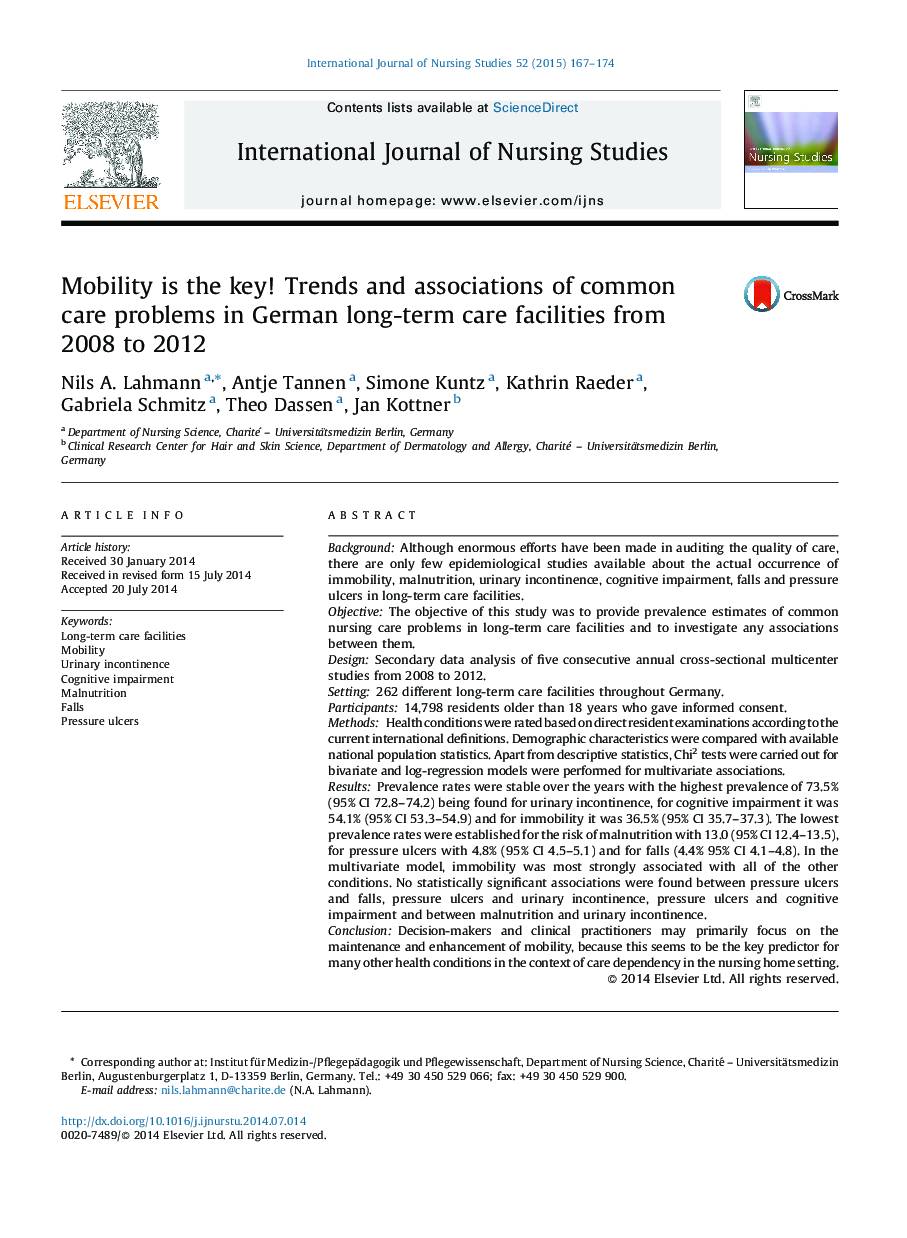| Article ID | Journal | Published Year | Pages | File Type |
|---|---|---|---|---|
| 1076032 | International Journal of Nursing Studies | 2015 | 8 Pages |
BackgroundAlthough enormous efforts have been made in auditing the quality of care, there are only few epidemiological studies available about the actual occurrence of immobility, malnutrition, urinary incontinence, cognitive impairment, falls and pressure ulcers in long-term care facilities.ObjectiveThe objective of this study was to provide prevalence estimates of common nursing care problems in long-term care facilities and to investigate any associations between them.DesignSecondary data analysis of five consecutive annual cross-sectional multicenter studies from 2008 to 2012.Setting262 different long-term care facilities throughout Germany.Participants14,798 residents older than 18 years who gave informed consent.MethodsHealth conditions were rated based on direct resident examinations according to the current international definitions. Demographic characteristics were compared with available national population statistics. Apart from descriptive statistics, Chi2 tests were carried out for bivariate and log-regression models were performed for multivariate associations.ResultsPrevalence rates were stable over the years with the highest prevalence of 73.5% (95% CI 72.8–74.2) being found for urinary incontinence, for cognitive impairment it was 54.1% (95% CI 53.3–54.9) and for immobility it was 36.5% (95% CI 35.7–37.3). The lowest prevalence rates were established for the risk of malnutrition with 13.0 (95% CI 12.4–13.5), for pressure ulcers with 4.8% (95% CI 4.5–5.1) and for falls (4.4% 95% CI 4.1–4.8). In the multivariate model, immobility was most strongly associated with all of the other conditions. No statistically significant associations were found between pressure ulcers and falls, pressure ulcers and urinary incontinence, pressure ulcers and cognitive impairment and between malnutrition and urinary incontinence.ConclusionDecision-makers and clinical practitioners may primarily focus on the maintenance and enhancement of mobility, because this seems to be the key predictor for many other health conditions in the context of care dependency in the nursing home setting.
